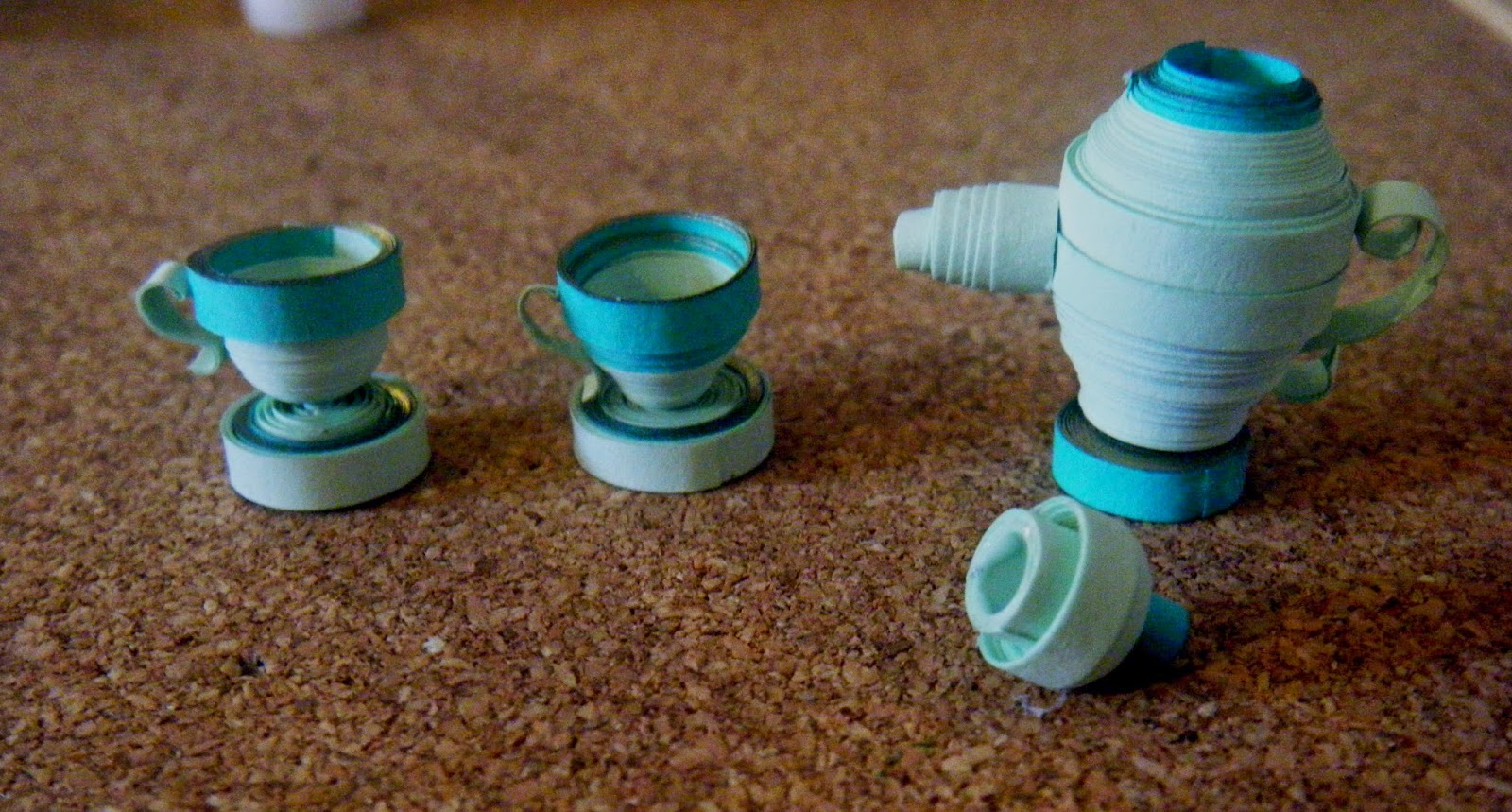The basics needed to get
started are Quilling Paper, a slotted tool/needle, glue and a pair of sharp scissors.
Just for interest I’ve
described below some tools that are used in quilling. I’ve also added a few
tips on using/making substitutes.
Paper:
Quilling paper is available pre-cut in various sizes – 2mm, 3mm, 5mm etc. I
usually work with 2 and 3mm. You can also cut your own. But from experience
I’ve found it’s quite time consuming and I prefer to quill rather than cut J However I have resorted to
cutting when I needed an odd size or colour that wasn’t available in my pre-cut
lots.
There are several kinds of
paper available from double sided bright colours, pastels and pearlised to
gold/silver edged ones that are great for those tight coils and also
one-sided strips (coloured on one side
and white on the other).
The length of pre-cuts can
differ from seller to seller. But you can easily get the length you need by cutting/tearing a strip or gluing two or
three strips together for a longer piece.
(I find when gluing two pieces together that tearing the strip leaves an
almost invisible seam whereas cutting it leaves a seam that is quite obvious).
Quilling
Tools: Slotted or Needle. The slotted tool is used by placing the
end of your paper into the slot and then twirling around. The needle is used
similarly, except that the paper is twirled directly on the needle. The finer
the needle the smaller the hole in the middle of your coil, which is helpful if
you’re making 3D dolls etc. Some quillers also use their fingers. I did try
this method and it does work after the initial struggle to get it started. Probably
gets better with practice.
If you don’t have specific
tools on hand don’t fret you can substitute
with a toothpick. I still use these and keep plenty of toothpicks on hand for
just this purpose. I have also used the middle (thicker) part of the toothpick
when I needed to make curly hair for my 3D dolls…more on that later.
Quilling
Mold:
This is a tool that’s used
for creating domes of different sizes especially when making 3D objects. It
helps to mold your coil into a nice rounded bowl shape. These can be quite
expensive so a lot of quillers use whatever is handy like a marble, ping-pong
ball, large beads etc. I have even used the rubber end of a pencil and it works
fine. The size just depends on what you’re trying to make.
Husking
Tool: this is used for making various shapes using either a
comb or pins stuck on a board. The further away the pins are the bigger/longer
your quilled object. I have used glass headed pins stuck on a cork board and
also different sizes of combs.
Glue:
The
best glue to use is a quick drying one that dries transparent like PVA glue.
Anything else just makes a mess and might rip your paper. You can use the kind
that comes with a tiny nozzle or if you’re on a tight budget you can buy the
large one and tip out a little at a time and use with a toothpick (told you those
things are useful!). One thing to be aware of if using the toothpick method,
the glue does tend to dry out (it is quick drying after all) and thicken. So
pour out what you need when you need it and try to do as much gluing in one
sitting. If it does dry out just peel
off the dry layer (isn’t it cool how pva glue just peels off like a sheet of
plastic?) and start again. Here’s a pix of dried pva glue that’s been peeled
off the glue pot. It’s actually dry and hard and you can see the pink quilling
paper underneath.
Quilling
Board:
This is handy for keeping
your coils at a consistent size, which is important for a neat finish. The coil
is placed in the template, allowed to unravel to size and then glued and
shaped. For example, the various shapes can be used to tessellate around an
object for a 3d project or for creating 2d designs such as cards. Keeping the
shape and size consistent is important for a neat finish.
Again, if you don’t have a
board, you can substitute with any circular object such as bottle lids of
various sizes – anything that will keep the shape consistent.
I’ve added this page just
out of interest for anyone that is brand new to quilling. Although most veteran
quillers will be familiar with all these tools and more, if you’re a fresher
like I was you might find it helpful. If you did please add a comment below.
Thank you.
Check my tutorials for ideas, tips and
techniques. I have also shared some mistakes I made with my initial ventures in
the hope that others can learn. Perhaps if you have similar experiences you can
share these so that we can all learn from each other.
Please visit my Facebook page Quilling Away to see more examples of my work.




































